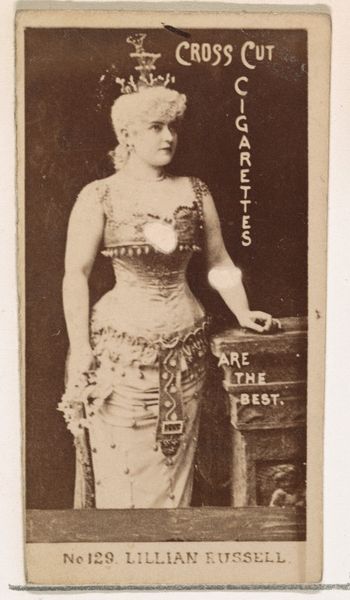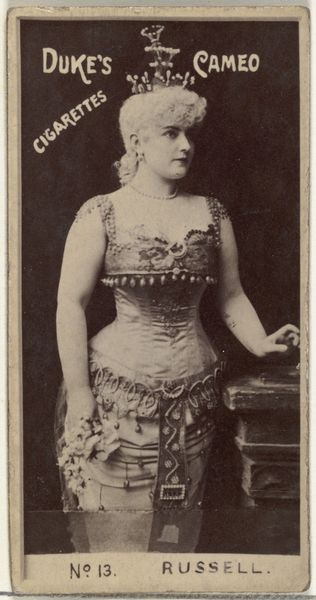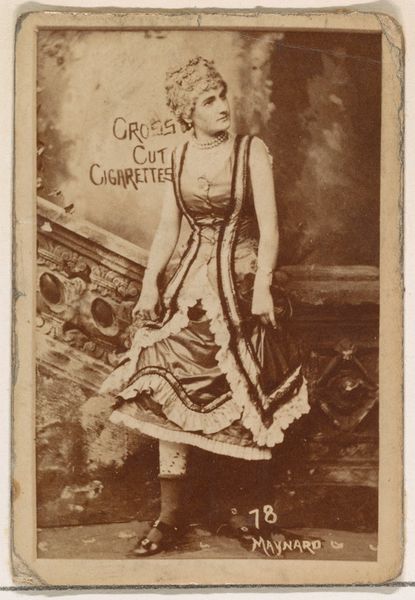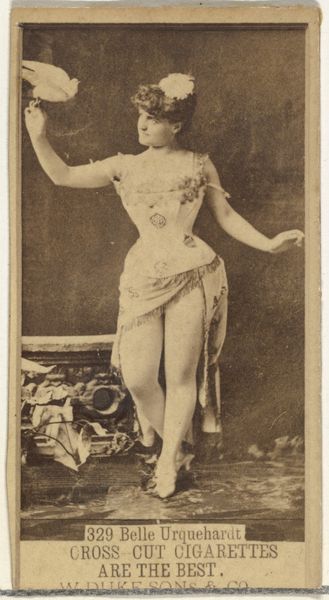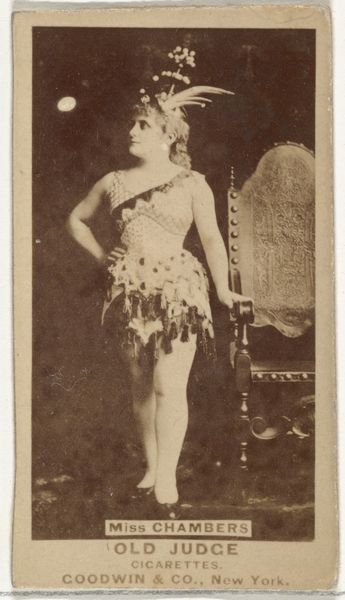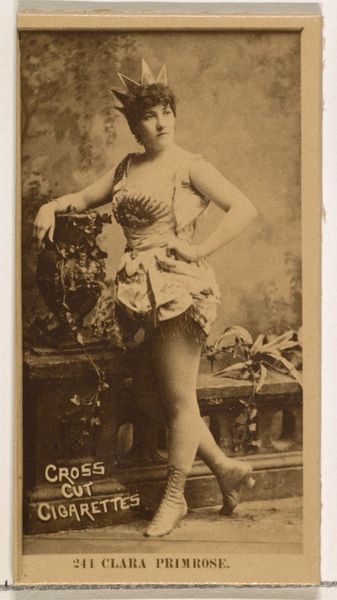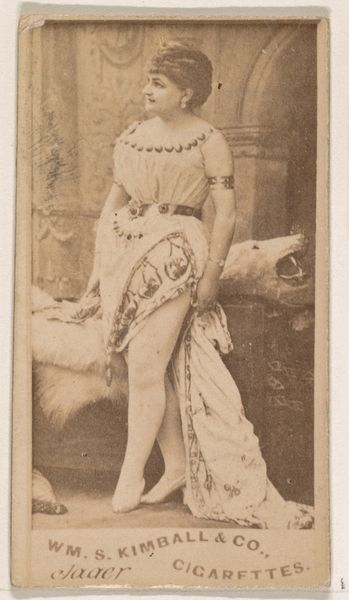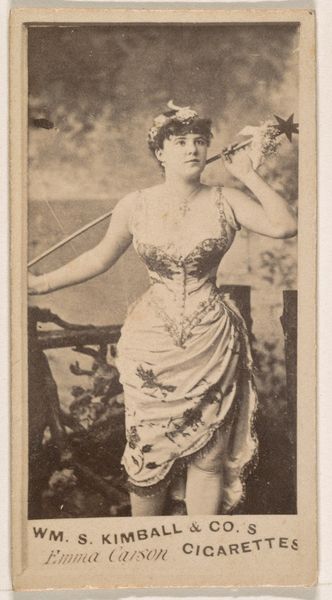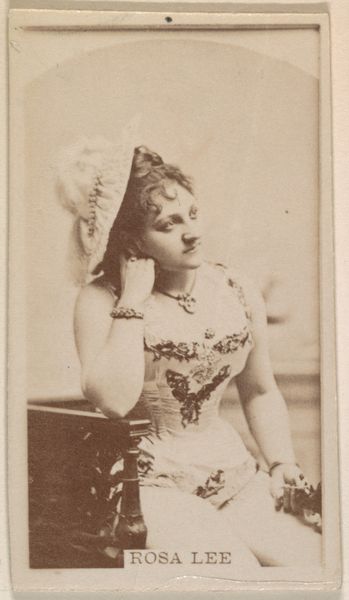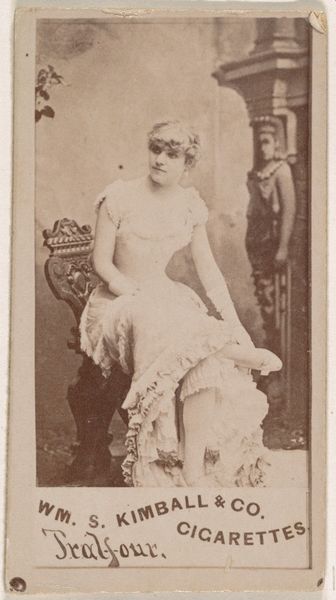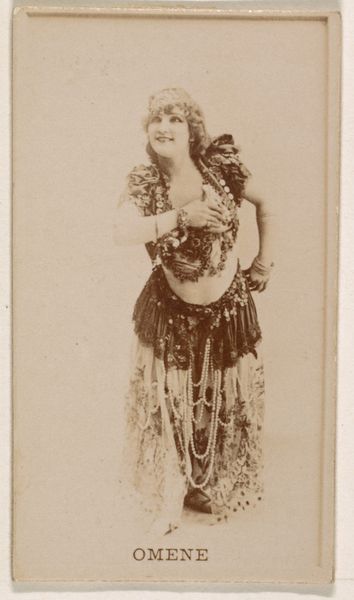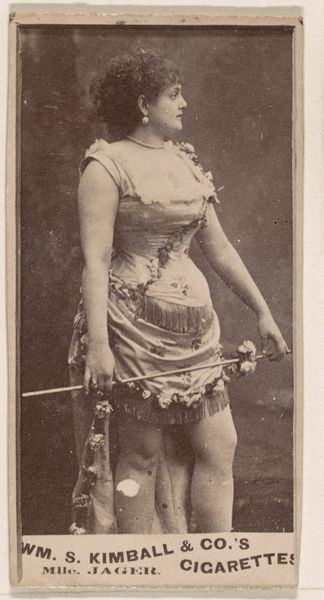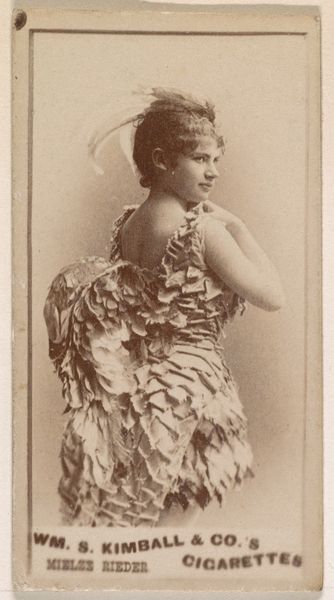
Card Number 113, Lillian Russell, from the Actors and Actresses series (N145-2) issued by Duke Sons & Co. to promote Cross Cut Cigarettes 1880s
0:00
0:00
drawing, print, photography
#
portrait
#
drawing
# print
#
photography
#
historical photography
#
19th century
Dimensions: Sheet: 2 5/8 × 1 7/16 in. (6.6 × 3.7 cm)
Copyright: Public Domain
Curator: This is "Card Number 113, Lillian Russell," from the Actors and Actresses series, a promotional item issued by Duke Sons & Co. in the 1880s. It's currently held at the Metropolitan Museum of Art. What's your immediate take? Editor: Va-va-voom! Look at that confection of a costume and tiny waist! It’s a feast for the eyes, isn't it? All those sparkly elements against that dark background—talk about drama! There's real artistry here. It’s definitely meant to seduce. Curator: It’s definitely doing something! These cards were little treasures, you know. They came with packs of Cross Cut Cigarettes. Back then, advertising was a far cry from billboards... I mean imagine collecting all your favourite celebrities by buying packs of cigarettes. Editor: And speaking of seduction, look at how the pose works with the cigarette advertising. The tiara atop her head paired with a seductive expression evokes that of goddesses and queens, a product designed for the elite. She represents power and beauty and aligns these characteristics to that of those who enjoy "Cross-Cut Cigarettes." Curator: Exactly. It’s interesting how those visual cues worked then and resonate even now. Her opulent dress, that impossibly cinched waist, even the backdrop. It creates a sense of longing, doesn’t it? The ornamentations symbolize all the elements of beauty, wealth and status. She wants to draw us into the dream. Editor: And it did and it still does. The dream peddled isn't necessarily one of smoking the right cigarettes. However, her beauty represents this unobtainable status for the commoners. What I see when I really consider it is the symbolism of the female performer; how that role itself has held symbolic power over the ages. To be beautiful is to perform in this capitalistic era, even for one's own life, I should think. It makes you want to pursue perfection, doesn’t it? I would ask: but is it sustainable? Curator: What a fascinating take, you're completely right! The performance becomes everything. Seeing it from that perspective is strangely illuminating. I’ll never look at another cigarette card the same way!
Comments
No comments
Be the first to comment and join the conversation on the ultimate creative platform.
